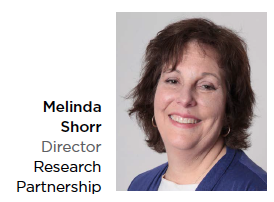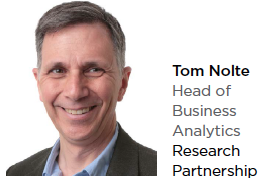 Many of us are familiar with billiard games, where two players compete to be the first to pocket all the balls on the table in a particular order. We recently used the game as an analogy to explore the value of effective portfolio management within a particular therapeutic category. Imagine that a set of racked billiard balls are the products in your portfolio. Each ball will require its own particular angle to achieve success. When a new ball breaks the cluster, only the savviest players can plan and strike in such a way that multiple balls will go in the right places to attain a competitive advantage.
Many of us are familiar with billiard games, where two players compete to be the first to pocket all the balls on the table in a particular order. We recently used the game as an analogy to explore the value of effective portfolio management within a particular therapeutic category. Imagine that a set of racked billiard balls are the products in your portfolio. Each ball will require its own particular angle to achieve success. When a new ball breaks the cluster, only the savviest players can plan and strike in such a way that multiple balls will go in the right places to attain a competitive advantage.
Portfolio analysis is a valuable tool used in market research to understand the dynamics of a product portfolio and how best to guide, direct and manage the communications strategy to best effect.
 Often, questions are raised about portfolio communications just before influence of an asset will begin to be felt. This can occur as products progress in clinical trials or through in-licensing and acquisitions. Marketers need to understand how this shift in the dynamics of the portfolio is going to have its effects. Will products be complementary or differentiating? What about share of voice: when a new asset is launched, the new entity might get more share of the communications than the others — and for how long? What should the portfolio positioning strategy be — should the portfolio move forward under an “umbrella positioning" or will each product need different positions to varying degrees? How will sales reps communicate the new asset in their lineup? How will physician segments respond to the message mix? How will the communications budget and channels be balanced across the portfolio?
Often, questions are raised about portfolio communications just before influence of an asset will begin to be felt. This can occur as products progress in clinical trials or through in-licensing and acquisitions. Marketers need to understand how this shift in the dynamics of the portfolio is going to have its effects. Will products be complementary or differentiating? What about share of voice: when a new asset is launched, the new entity might get more share of the communications than the others — and for how long? What should the portfolio positioning strategy be — should the portfolio move forward under an “umbrella positioning" or will each product need different positions to varying degrees? How will sales reps communicate the new asset in their lineup? How will physician segments respond to the message mix? How will the communications budget and channels be balanced across the portfolio?
Involving a Diverse Range of Stakeholders
In order to answer these questions effectively, portfolio analysis often means involving a wide and diverse range of stakeholders from across the pharmaceutical company. Obviously, we require the input of the market research/customer insights group, as well as marketing and brand leadership, and whoever is spearheading the overall portfolio. Yet in portfolio optimization the internal audience can be wider, involving competitive intelligence, analytics, forecasting, medical, mergers and acquisitions, and new product planning. External communications and creative agencies are likely to be involved. Bringing all relevant parties to the table early can make the task seem more onerous, but will pay dividends further along the line.
To support this process, we always recommend conducting workshops at both the start and end of the research, involving all the key stakeholders. Teams will be required to share ideas and collaborate in ways they may not be accustomed to, which can be challenging. Critically, teams need to identify two leaders within the client team with the knowledge and power to keep the project on the right track:
A project leader in the customer insights group with the experience to understand and balance the sometimes conflicting interests among multiple brand leaders and stakeholders.
A marketing or portfolio lead who can work across brands to be the final arbiter on which communications will move forward within and across the portfolio when multiple brands are being promoted.
Without confident leadership in place, portfolio optimization studies can become stalled with indecision or worse, never get off the ground.
In the kickoff team workshop, the aim is to answer or hypothesize about a set of internal questions that will guide much of the research. We call these the Grounding Questions. They include questions such as: What is the current market penetration for each existing product, and what is their share of voice within the therapeutic portfolio? Which agent is expected to have the most short- and medium-term company resources backing it? What are the principle similarities and differences among the agents within the set of offerings?
In the next stage, we consider research design. There are three main “jobs" that the methodology needs to do in portfolio analysis. We look for methods that will:
1. Assess the priorities among the assets
Near- and medium-term implications for brands
2. Sort and categorize communications
Bundling, channel preferences, associations
3. Explore the messages to emphasize
Promoting multiple products through the same channel
One of the main tasks in portfolio communications is ensuring that multiple products can be communicated clearly and effectively during a single rep visit. Digital communications also have a major stake in ensuring portfolio communications effectiveness. We’ve used these three methodology frameworks to hone communications for effectiveness while building a portfolio story.
For the research design itself, we take a modular approach. Following the workshop we build upon hypotheses from the workshop to form the foundation for testing. Then, we will develop a research program, which nearly always includes a mix of qualitative and quantitative approaches. For example, exploratory research among key opinion leaders could be undertaken in order to provide insight into the therapeutic implications of the portfolio and medium-term market impact. In design, we consider the use of advanced analytics, such as associate mapping and reach analysis that can be used to identify messages and/or themes that resonate with one product versus those that can represent the larger portfolio.
Once the research is completed, it’s time to bring the team back to the table, to explore the findings and generate a plan of action for the creation of a portfolio story. We work through the insights with stakeholders and explore the consequent implications for each product and across the portfolio. This approach provides the substance for an effective portfolio communications strategy, which allows the entire franchise to work both independently and cohesively.(PV)
Research Partnership, one of the world’s largest independent healthcare market research and consulting agencies, is trusted by the global pharmaceutical industry to provide the intelligence it needs to flourish in an environment that’s becoming ever more challenging.
For more information, visit researchpartnership.com.

















